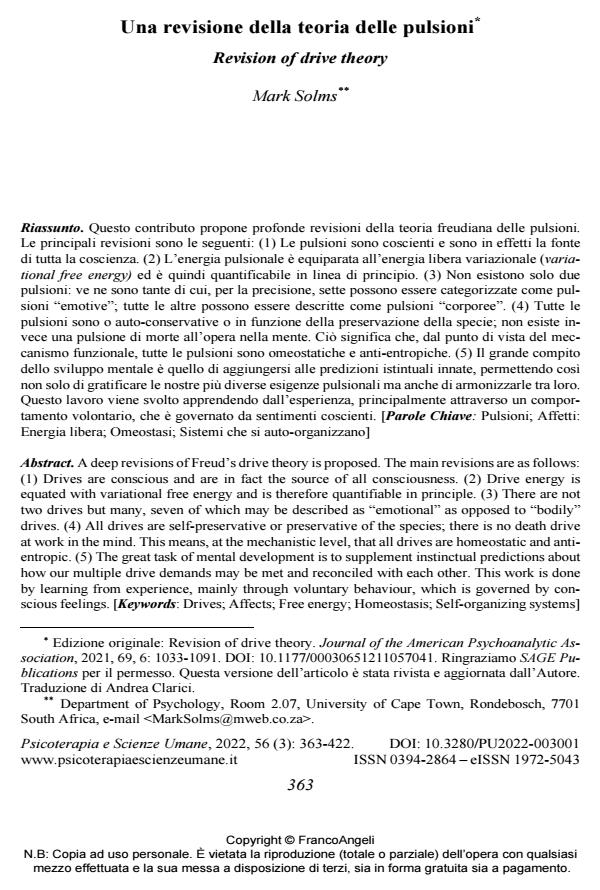Revision of drive theory
Journal title PSICOTERAPIA E SCIENZE UMANE
Author/s Mark Solms
Publishing Year 2022 Issue 2022/3
Language Italian Pages 60 P. 363-422 File size 382 KB
DOI 10.3280/PU2022-003001
DOI is like a bar code for intellectual property: to have more infomation
click here
Below, you can see the article first page
If you want to buy this article in PDF format, you can do it, following the instructions to buy download credits

FrancoAngeli is member of Publishers International Linking Association, Inc (PILA), a not-for-profit association which run the CrossRef service enabling links to and from online scholarly content.
A deep revisions of Freud’s drive theory is proposed. The main revisions are as follows: (1) Drives are conscious and are in fact the source of all consciousness. (2) Drive energy is equated with variational free energy and is therefore quantifiable in principle. (3) There are not two drives but many, seven of which may be described as "emotional" as opposed to "bodily" drives. (4) All drives are self-preservative or preservative of the species; there is no death drive at work in the mind. This means, at the mechanistic level, that all drives are homeostatic and anti-entropic. (5) The great task of mental development is to supplement instinctual predictions about how our mul-tiple drive demands may be met and reconciled with each other. This work is done by learning from experience, mainly through voluntary behaviour, which is governed by conscious feelings.
Keywords: Drives; Affects; Free energy; Homeostasis; Self-organizing systems
- Editoriale Laura Corbelli, Paolo Migone, in Ricerca Psicoanalitica /2022
DOI: 10.4081/rp.2022.726
Mark Solms, Una revisione della teoria delle pulsioni in "PSICOTERAPIA E SCIENZE UMANE" 3/2022, pp 363-422, DOI: 10.3280/PU2022-003001